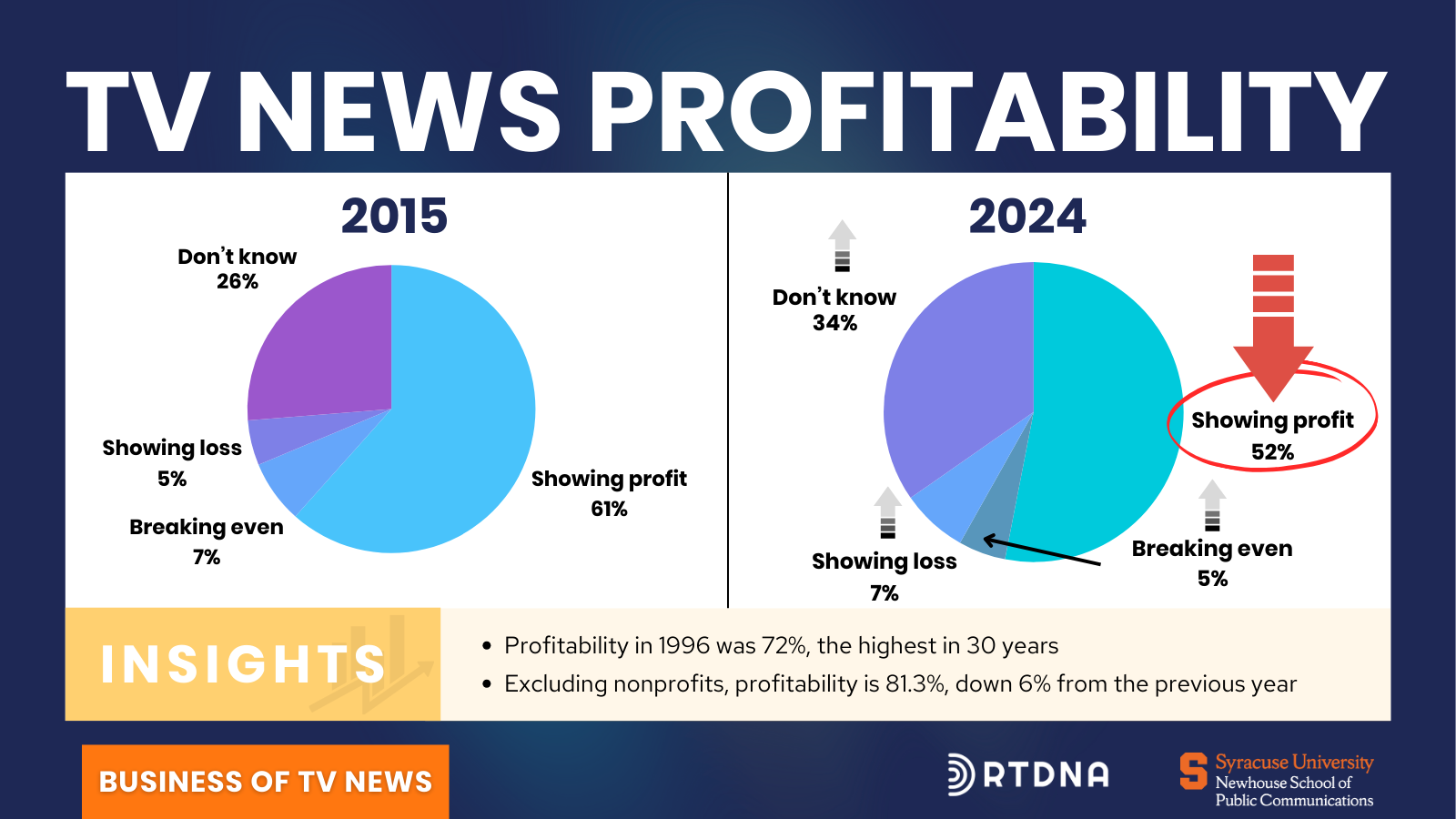TV news faces profit drop

Sept. 10, 2024 — The TV news industry has faced a challenging year. The latest RTDNA/Newhouse School at Syracuse University Survey reveals a nearly six-point decline in TV news profitability, coupled with a 4% increase in losses. However, next year's statistics may reflect the impact of it being an election year.

Overall profitability in 1996 reached 72%, the highest level recorded in 30 years of conducting the survey. The missing percentages represent non-commercial stations. If recalculated to exclude the effect of nonprofit newsrooms, the profitability percentage increases to 53.3%. Among news directors who know whether the news department is profitable (excluding the “don’t know” and “nonprofit” groups), 81.3% report that the newsroom is profitable. These are strong numbers, but still down 6% from the previous year.
The most significant changes in profitability compared to a year ago occurred primarily in the top 25 markets. In these markets, the percentage reporting a profit dropped by 19%; the percentage reporting a loss increased by nearly 11%, and the percentage of those unsure rose by 17%. No other group experienced changes of this magnitude from last year to this year.
The following table was restructured last year to facilitate comparisons with previous years. Most of the numbers are fairly similar to those of earlier years, with two exceptions. TV stations providing content to local radio increased by nearly 7%, while those not providing content to any other media increased by about 5%.

About the Author
Bob Papper is Research Professor of Broadcast and Digital Journalism at Syracuse University and has worked extensively in radio and TV news.
Keren Henderson is Associate Professor of Broadcast and Digital Journalism at Syracuse University.
This research was supported by the S. I. Newhouse School of Public Communications at Syracuse University and the Radio Television Digital News Association.
About the Survey
The RTDNA/Newhouse School at Syracuse University Survey was conducted in the fourth quarter of 2023 among all 1,876 operating, non-satellite television stations and a random sample of 4,764 radio stations. The television response rate is different for every question, but Valid responses came from as many as 1,387 television stations (73.9%) and 631 radio news directors and general managers representing 1,902 radio stations. Some data sets (e.g. the number of TV stations originating local news, getting news from others and women TV news directors) are based on a complete census and are not projected from a smaller sample.
